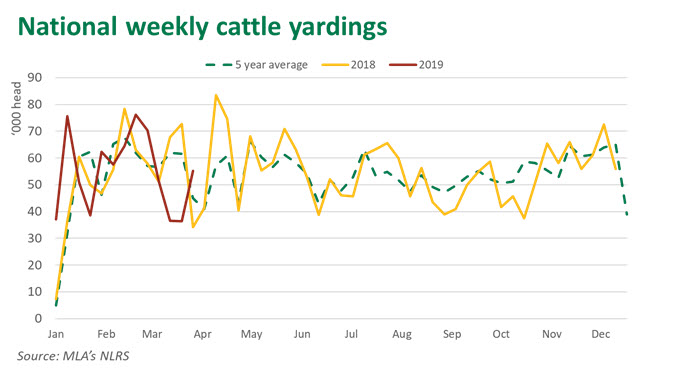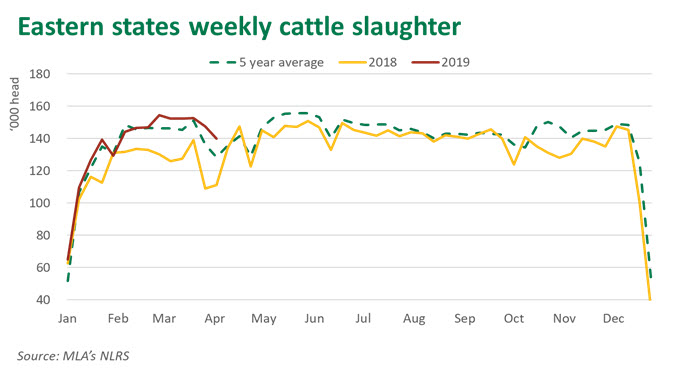Cattle market stabilises
The cattle market has come off the boil this week, as saleyard throughput returned to a level in line with the five-year average. The increase in yardings has seen prices for most categories ease slightly after rising sharply throughout March.
Supply

After two weeks of the lowest weekly yardings since March 2018, when Easter disrupted sales, throughput returned to be in line with the five-year average, with 55,098 head yarded across NLRS reported saleyards for the week ending April 5. It is looking like this week will see further increases, with big yardings at Roma, Carcoar, Dalby, Gunnedah, Tamworth and Wagga.
Prices
Over the past seven days, the Eastern Young Cattle Indicator (EYCI) eased 12.25¢/kg carcase weight (cwt) and the eastern states medium steer was back 7.5¢/kg live weight (lwt).
Eastern states medium cow prices have seen strong support in recent weeks, courtesy of renewed restocker confidence in the market, following the recent rain. Tuesday’s indicator was 50.5¢ higher when compared with last month, at 183¢/kg lwt. However, with widespread follow-up rain still required, prices have declined week-on-week, down 13.5¢.
Medium steers have increased 61.5¢ on month ago prices, to 276¢/kg lwt. This is up slightly (2.7¢/kg lwt) on year-ago-levels, which is surprising considering the pressure the market has been under over the past 12 months.
The eastern states heavy steer indicator increased 2.70¢/kg from week-ago-levels to 284¢/kg lwt, as demand for finished cattle remains buoyant.
Slaughter

Year-to-date slaughter has been up 14% compared to the same period in 2019. The percentage of female cattle going to processors remains high, with February ABS slaughter data indicating 54.3% of adult cattle slaughter comprised of cows or heifers. On a 12-month rolling basis the percentage of female slaughter reached 51.8%. This is a long way above the 47% baseline considered necessary for a stable herd and indicates the herd remains in a contraction phase.



